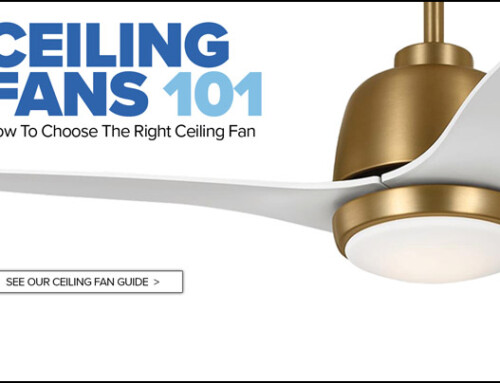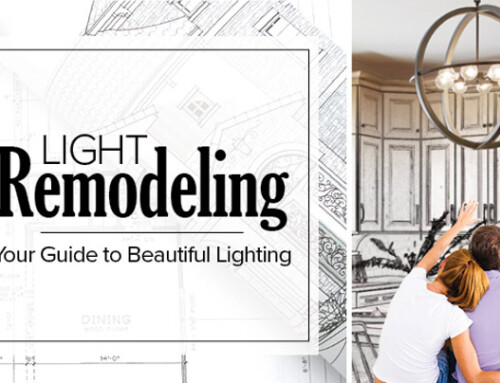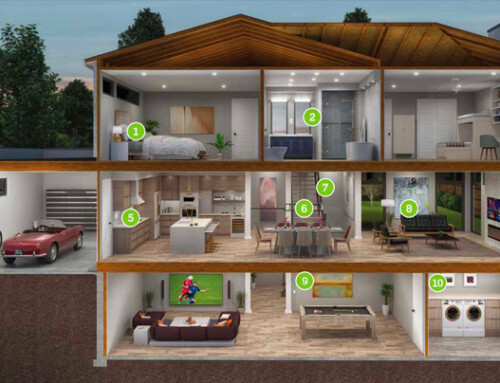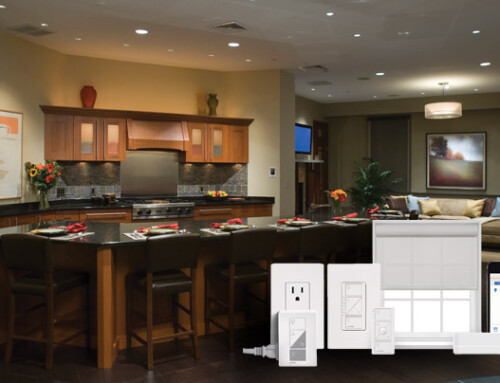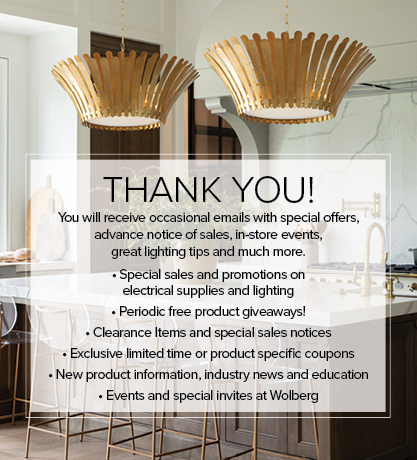The wallpaper is up. The drapes are hung, and the furniture is in place. But something is missing. Decorating is not complete without a selection of stylish lighting to seamlessly finish the look.
There was a time when lighting did not have the decorating value that it has today. The choices were few and the styles limited. Now, consumers can find a floor lamp, table-lamp, chandelier, pendant or sconce to fit their décor, no matter the room.
“The industry has evolved,” says Monty Gilbertson, CLC, manager and buyer for Lighting Design by Wettstein’s in Lacrosse, WI. “There was a time 10 to 12 years ago when lighting was in a rut. In the last few years—really five to eight—it has turned almost into more of an apparel-type market … where on a year-to-year basis there can be some hot spots. There are a lot of new looks every year.”
Today’s looks follow four major developments as stated by experts of the American Lighting Association (ALA).
1. Softer metals. The new design season has brought with it a diverse selection of softer metallic finishes. Brushed nickel, stainless steel, pewter, even brushed copper, have done their best to dethrone brass as the top finish choice. The softer tones of these gray metals make it easier for a lamp to blend with a multi-toned interior, according to Dan Blitzer, the American Lighting Association’s technical lighting consultant.
2. Painted finishes. The availability of multi-toned colored finishes offers consumers lamps with more depth and texture—a trend that has come about from the joining of style and technology. Manufacturers now have the ability to elegantly apply layers of color to create the finish. The resulting look fits well with traditional styles and allows the fixture to blend with many colors in a room. Expect to find colored finishes with a soft tone that may include gold or silver flecks and tones of brown and red. Don’t forget about white, too, says Gilbertson. Textured white finishes are also widely popular.
3. More authenticity. Developing hand-in-hand with painted finishes, are weathered finishes and patinas, which offer a unique, timeless look. “This is the next antique brass,” says Gilbertson. “It’s a soft, traditional look.” The style has become more distinguished and authentic with changing technology. “
Many of the painted finishes look so much like an original weathered finish that the consumer won’t be able to tell, says Todd Langner, vice president of marketing and product development for Kichler in Cleveland, OH. “The whole array of darker, richer bronzes is still very, very strong,” he says.
4. Better detail. “Today’s fixtures are more refined,” says Blitzer. “There’s more attention to detail.” Nearly every aspect of the lamp, from the base to the pull chain, has earned more decorative detail, giving the lamps greater sophistication. Small details have increased the volume of choices for the consumer and have made it easier for the buyer to find a distinct style for their home.
“A lamp should be as interesting and as pretty without the light,” says home furnishings and lighting designer Sergio Orozco, owner of Sergio Orozco Designs Inc., in West New York, New Jersey. “That is the ultimate objective. That way, … it is an accessory. The objective here is to make each luminary a piece of architecture.”
Top It Off
It isn’t possible to consider the weight of lighting in home décor without considering one the lamp’s most decorative features—the lampshade. It, too, has evolved from the days of limited choices.
“Lampshades have gone bonkers,” says Gilbertson. “There are all these eclectic shades. It has just exploded.”
Shades have taken on a more decorative look with a variety of shapes, fabrics, and adornments. Materials from metal and paper to tapestry and sheers have made it onto shades. Beads, stones, wire, fringe, and myriad accoutrements create an added flare to many designs. Nearly anything—within safety guidelines—can be found atop a lampshade.
“We’re all designing in a tremendous amount of additional detail,” says Langner. “That does include a lot of hanging ornaments on the shade, whether it is crystal or beads or whatever … It’s been a growing trend for several years.”
No longer is the A-frame shade the only choice, either. Certainly, the off-white silk shade in its traditional form is available, but why stop there when you can customize a lamp with shades shaped in cylinders, spheres, rectangles, and squares. Many shades are also designed to fit uniquely with the lamp’s overall design.
“If [manufacturers] don’t have unique shades today, [they] are off, off the market,” says Orozco. “The development of techniques and technology has taken [designers] outside of the square box. It’s developed into a trend that has become fashionable. And, now I think it has become an art form.”
When it comes to decorating a home, lighting certainly can’t be left out. A well-chosen lamp may make all the difference. And finding the right one shouldn’t be too difficult.
“Lighting has changed dramatically,” says Gilbertson. “And, of course, it does a dramatic thing for your house. [Remember], it is how it’s done that can make a world of difference.”
TIPS when shopping for decorative lighting:
1. Find an ALA Certified Lighting Consultant (CLC). He or she can make sure that you choose, not only a great decorative lamp, but also one that serves its purpose of lighting the space properly.
2. Bring in an example. A picture from your favorite magazine can make it easier for a salesperson to visualize your needs.
3. Know your budget. The costs of lighting vary; so remember to keep an open mind in case the pendant you’re in love with would break the bank.
4. Bring in swatches, paint chips, and other examples of the room where the lamp will be located. That will make it easier to coordinate with your décor.
5. If you can’t find exactly what you want, consider having it custom made. Many lighting companies can do that for you.
Back to the Basics
Even when you’re decorating, it is important to consider the practical purpose of the lighting in each room. Choose a light that offers you the best ambient or overall lighting, task lighting, and accent lighting based on your needs. Here’s what you can expect from some of the most popular fixtures:
Ceiling fixtures are best used for general lighting.
Chandeliers also create a general lighting atmosphere. Dimmers can add drama to any room featuring a chandelier. Don’t be restricted to using this fixture in the dining room. They are also ideal in a bedroom or living room. Some may also have downlights to offer task lighting.
Hanging fixtures, such as those used in a foyer, will offer general lighting that will create a comfortable level of lighting.
Pendants are a versatile way to create task or general lighting. Although mostly seen in kitchens, consider hanging several pendants at various heights over your favorite reading chair for a stylish accent.
Portable lamps will create general, task, and accent lighting, but have the added bonus of being mobile. Table lamps, floor lamps, and torchieres come in all shapes and sizes to complement any style.
Recessed lighting hides away in your ceiling while offering general, task, and accent lighting. Although not the most stylish collection of lighting, using recessed lighting may allow you more options for the rest of your lighting needs.
Track lighting is flexible enough to offer each form of lighting and has become a very stylish choice. You can rotate, swivel, and aim individual fixtures to meet your needs as they change.
Wall-mounted fixtures will provide general, task, and accent lighting. The number of choices for such fixtures makes them an ideal way to add style to a room.



